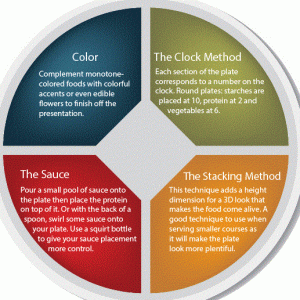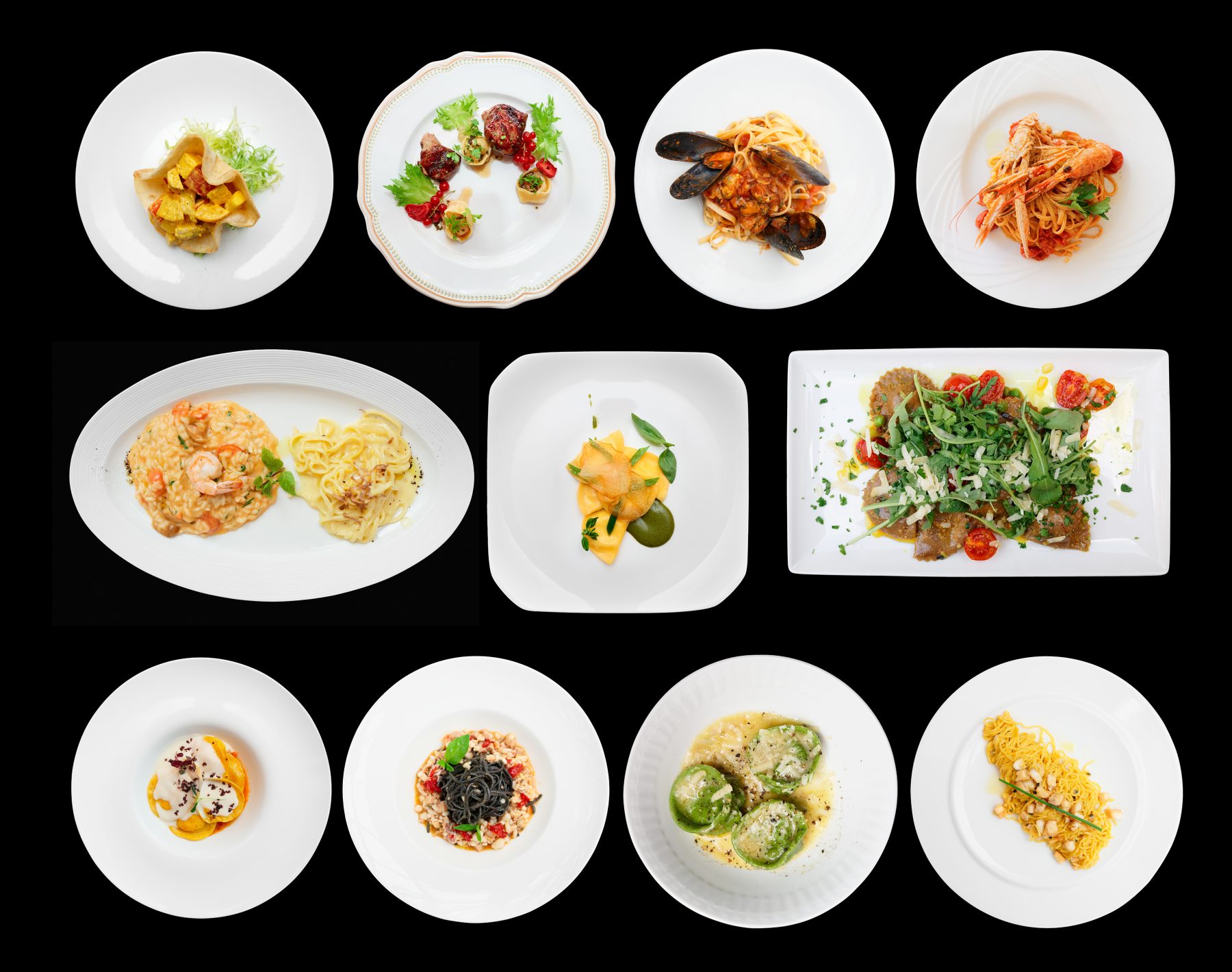Round plates: conventionally, starches are placed at 10, protein at 2, and vegetables at 6.
Square plates: divide into quadrants when figuring out the placement of foods.
The Stacking Method
Using this technique adds a height dimension for a 3D look that makes the food come alive. This is a good technique to use when serving smaller courses as it will make the plate look more plentiful. Stacking can be done with the use of food molds and rings or can also be done free-form to add that extra panache! Don’t be afraid to serve meat or fish on top of a bed of green beans and garnish the top with crispy fried leeks. Adding different textures will also make your dish more appealing to the senses.
The Sauce
And, don’t forget to dress your plate with the all-important sauce. The success of any presentation also depends, in large part, how the sauce is handled. Rather than pouring sauce over your protein and covering the sizzling grill marks, pour a small pool of sauce onto the plate then place the protein on top of it. Or with the back of a spoon, swirl some sauce onto your plate. Give your swirl clean lines and be careful not to overdo it. For a different look you can also use a squirt bottle to give your sauce placement more control.
Color
Lastly, make your food come alive with color. Complement monotone-colored foods like potatoes or plain noodles with green chive accents, add red bell pepper confetti around the perimeter of the plate, a thin twist of lemon to grilled fish, or a fresh sprig of mint or edible flowers to finish off your presentation. The important thing when plating is simply to experiment with different arrangements until your creative side gives you that final nod.

Information from Cambro.com


